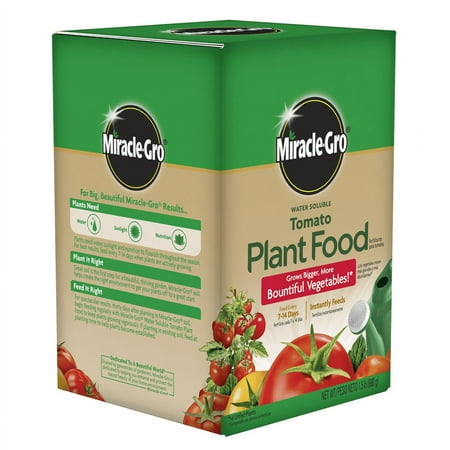These are the secrets to growing bigger potatoes – advice from professional growers guaranteed to boost your harvest
Bulk up your potato crops with our list of easy-to-follow expert tips and tricks
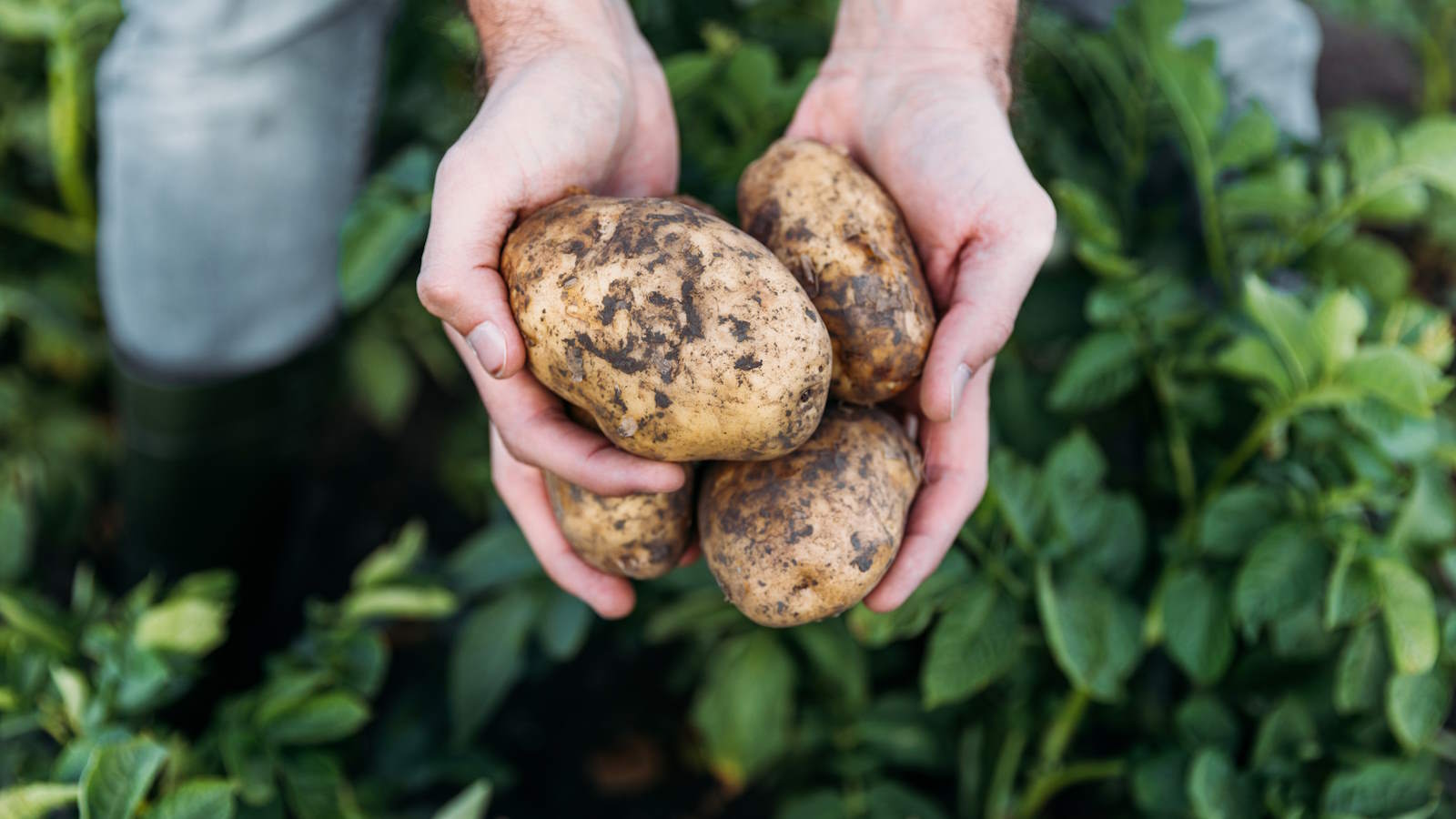

Have you been disappointed with your crop and dream of lifting that garden fork out of the ground and seeing the welcome sight of a bumper crop of large and beautiful potatoes?
Growing potatoes is a hugely popular pastime and they are staple crops in vegetable gardens around the world. Simple to grow and capable of being stored for many months, potatoes are part of everyday diets and homegrown potatoes are far superior to any in stores.
If you strive to grow bigger potatoes, there are ways and means to help make that a reality. The potatoes you choose and the decisions you make about how you grow them can be the difference between disappointing harvests and big potatoes.

Big potatoes are great for baking
5 expert tips for big potatoes
I have grown and harvested many different varieties of potatoes over the years, on home plots and in kitchen gardens across the UK. I have grown potatoes in the ground, in raised beds, and different containers. I have had good harvests, and been hit with disappointing ones.
To help maximize your potato harvests I look at key aspects to get right that I have learnt and get tips from other experienced growers so you can grow bigger potatoes.
1. Pick large varieties to grow

Maincrop potatoes are bigger than other types and harvested from late-summer
There are thousands of different types of potatoes, ranging in size, color, and flavor. The varieties you choose to grow will determine the size of potatoes you should expect.
The largest potatoes are maincrop varieties. They take longer to grow than earlier varieties, but you are rewarded for the longer growing season with larger potatoes come harvest time.
Design expertise in your inbox – from inspiring decorating ideas and beautiful celebrity homes to practical gardening advice and shopping round-ups.
Some of the best potato varieties for large tubers include ‘Kondor’ - which holds the world record for the heaviest potato - ‘Cara’, and ‘Russet’ varieties.
You can grow bigger potato varieties in raised beds or small vegetable gardens too. They are suitable for growing potatoes in containers, buckets, or grow bags.
2. Chit your seed potatoes
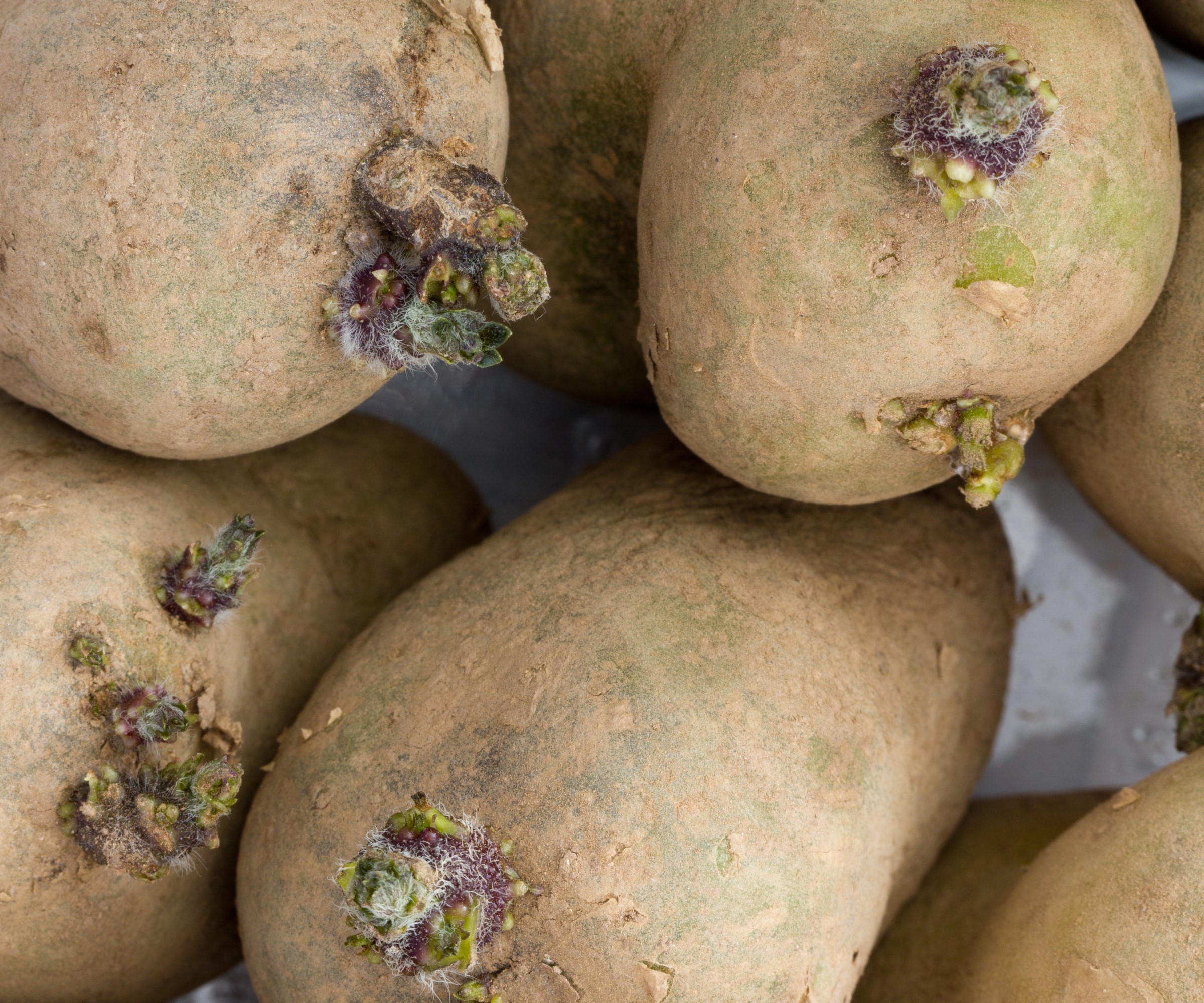
Chitting potatoes increases the yield and is common practice among growers
Chitting potatoes helps you get a larger crop and bigger potatoes. Chitting extends the season, giving the tubers a head start, and it is suitable for all types of potatoes. While it is not often seen as essential for maincrops, it still offers advantages and you can get larger tubers.
Keep tubers in a bright, warm spot to encourage your seed potatoes to develop strong and healthy shoots. Tubers can produce many shoots when chitted. Removing some of these to leave two or three shoots per seed potato will mean you get fewer tubers, but bigger potatoes.
3. Give them space to develop

Potatoes are planted in early-to-mid spring, depending on the type
Planting potatoes further apart can result in bigger tubers to harvest. A common potato planting mistake is overcrowding plants hoping that more plants mean a bigger harvest.
Dominique Kline, farm manager at The Hope Farm, warns that planting too closely can result in potatoes suffering from nutrient deficiencies and that will affect their size. She says: ‘When plants compete for nutrients, they collectively fail to thrive, leading to legginess, deformation, and stunted growth.’
If you want to grow bigger potatoes, planting them further apart than normally recommended allows plants to take in more nutrients and water - which will mean larger potatoes.
Planting maincrop potatoes 24 inches apart, rather than 12-15 inches as often recommended, can reward you with bigger potatoes. Keep a distance of 24-26 inches between rows.
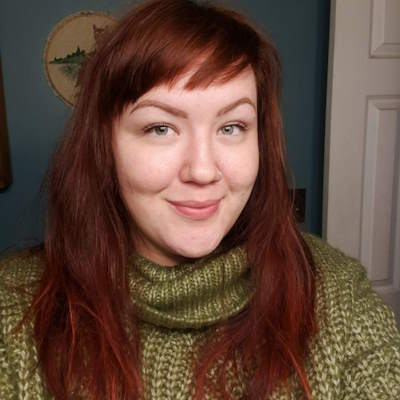
Dominique Kline is the Farm Manager at The Hope Farm in Fairhope, Alabama. The Hope Farm offers a farm-to-table experience to customers and Dominique manages all the growing of produce on the farm.
4. Fertilize your potatoes
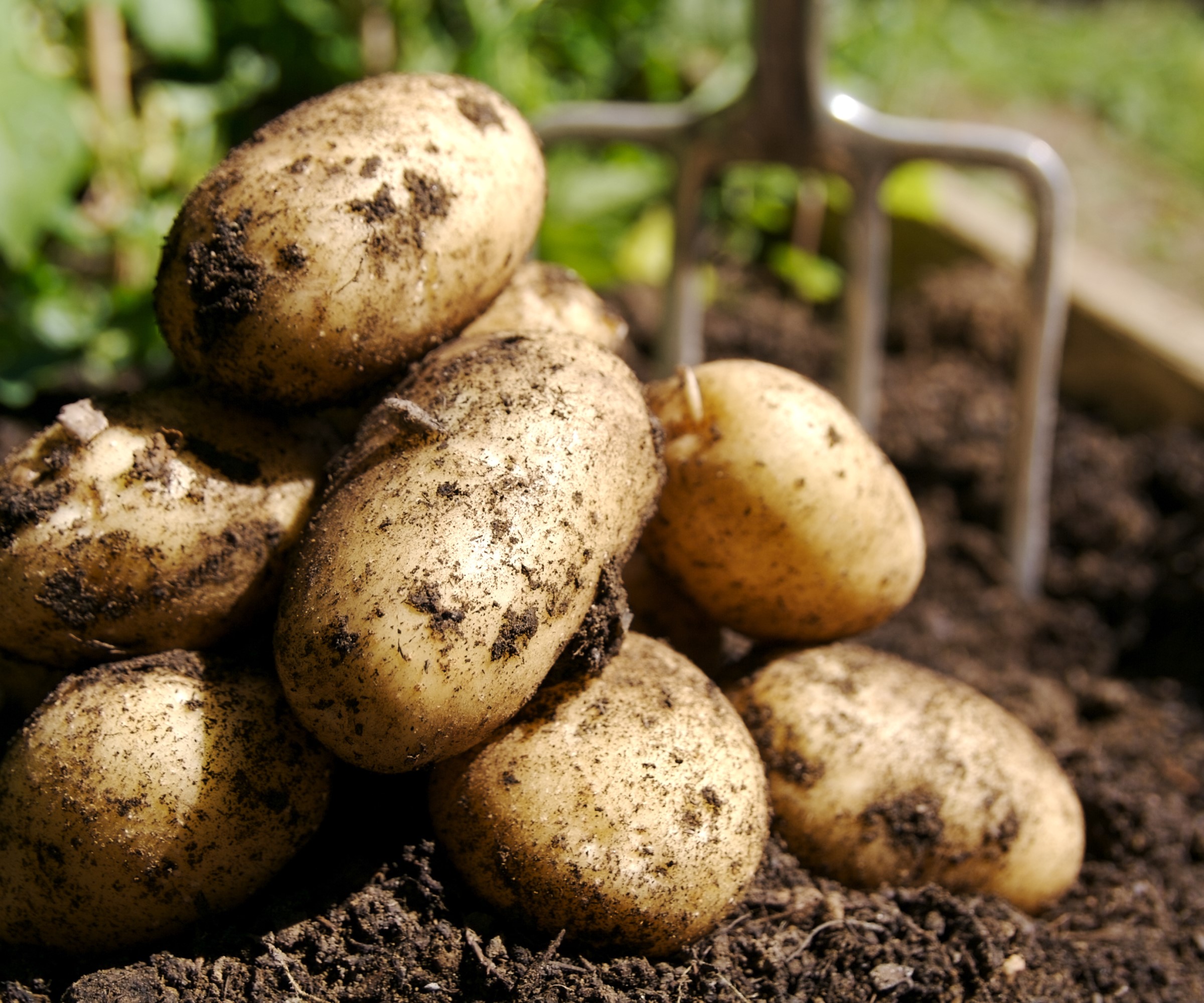
The crop is a heavy feeder that needs lots of water and nutrients to grow bigger potatoes
Potatoes are hungry crops and proper fertilization helps produce a great harvest of large tubers. The plants want a sunny spot and rich and fertile soil.
Sunlight and nutrients are required to increase the size of tubers and, Melvin Cubian, the gardening expert at PlantIn, says: ‘If these requirements are absent, you will likely get a less abundant harvest by the end of the season.
‘To combat the issue, ensure that potatoes are planted in a sunny location and are well-fed with complete fertilizers or that the soil contains lots of organic matter.’
Adding lots of organic matter into the growing spot, such as compost or well-rotted manure, ahead of planting can boost any soil type and fertilize potatoes to help boost your yield. Or you can use a slow-release all-purpose fertilizer with a good nitrogen level at the time of planting.
Once you start hilling up the potatoes, a feed high in phosphorus and potassium will help to bulk up the tubers. It is vital at this stage to avoid adding too much nitrogen, as Dominique Kline says: ‘Nitrogen promotes lush foliage, but in potato farming, we’re seeking root development.
‘An overabundance of nitrogen can cause your plants to put all of their energy into leaf development rather than bulking their tubers.’

Melvin is a certified gardening and plant care expert at PlantIn, which provides a personalized experience for anyone interested in planting and gardening.
Shop potato fertilizers
5. Remove the flowers from your potato plants
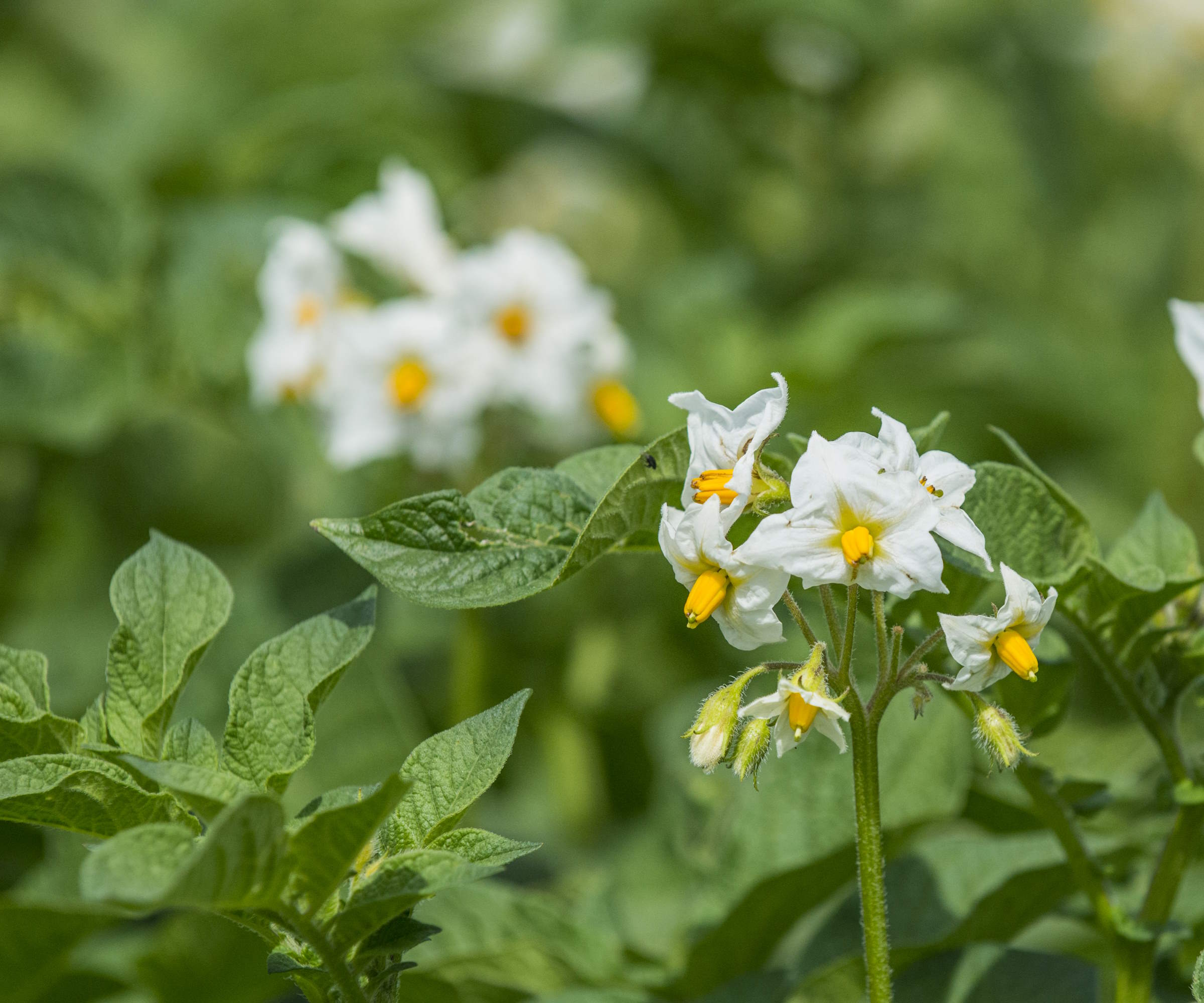
Potato flowers appear towards the end of the plant's life cycle
This tip is not essential but could potentially help. I have heard the advice many times from older vegetable growers over the years that removing the flowers from potato plants helps increase the yield. The theory is that getting rid of the flowers means the plant will divert the energy back into developing the tubers rather than flowering and fruiting.
In truth, the logic is sound but to my knowledge it's a theory that has never been proven. However, if you are searching for bigger potatoes, removing the flowers could be a quick and simple trick that may help bulk up your potatoes.
FAQs
Which potatoes grow the biggest?
The world record for the heaviest potato ever recorded was a ‘Kondor’ potato grown by Peter Glazebrook in the UK in 2011. It weighed in at a mammoth 4.98 kg (10 lb 14 oz) at the National Gardening Show at the Royal Bath & West Showground in Shepton Mallet, Somerset.
After lifting your large potatoes, you must store them properly so they remain good for as long as possible. Store potatoes somewhere cool and dark in a ventilated box, basket, or mesh bag and you can enjoy them for many months.

Drew has worked as a writer since 2008 and was also a professional gardener for many years. As a trained horticulturist, he worked in prestigious historic gardens, including Hanbury Hall and the world-famous Hidcote Manor Garden. He also spent time as a specialist kitchen gardener at Soho Farmhouse and Netherby Hall, where he grew vegetables, fruit, herbs, and cut flowers for restaurants. Drew has written for numerous print and online publications and is an allotment holder and garden blogger. He is shortlisted for the Digital Gardening Writer of the Year at the 2025 Garden Media Guild Awards.


